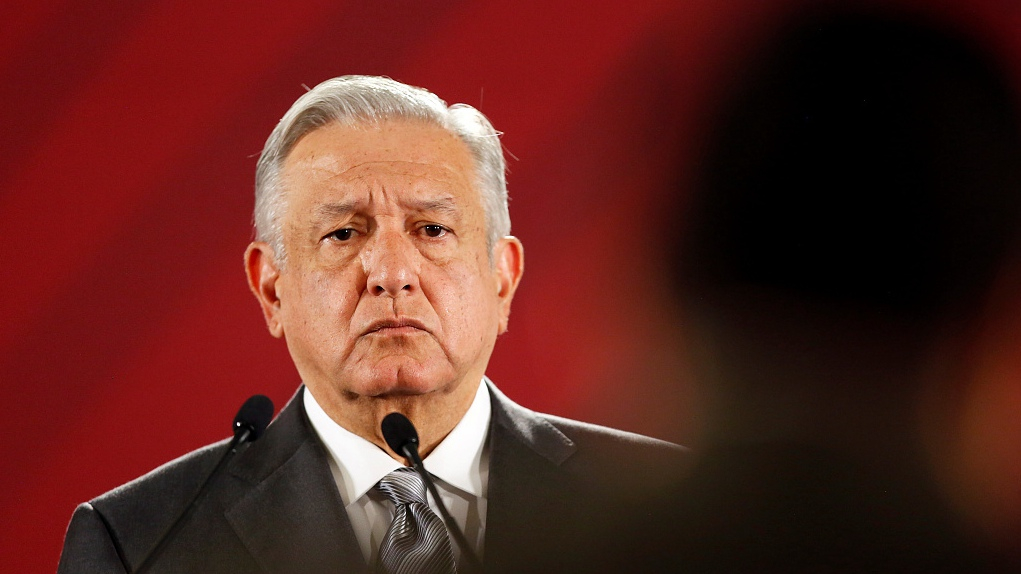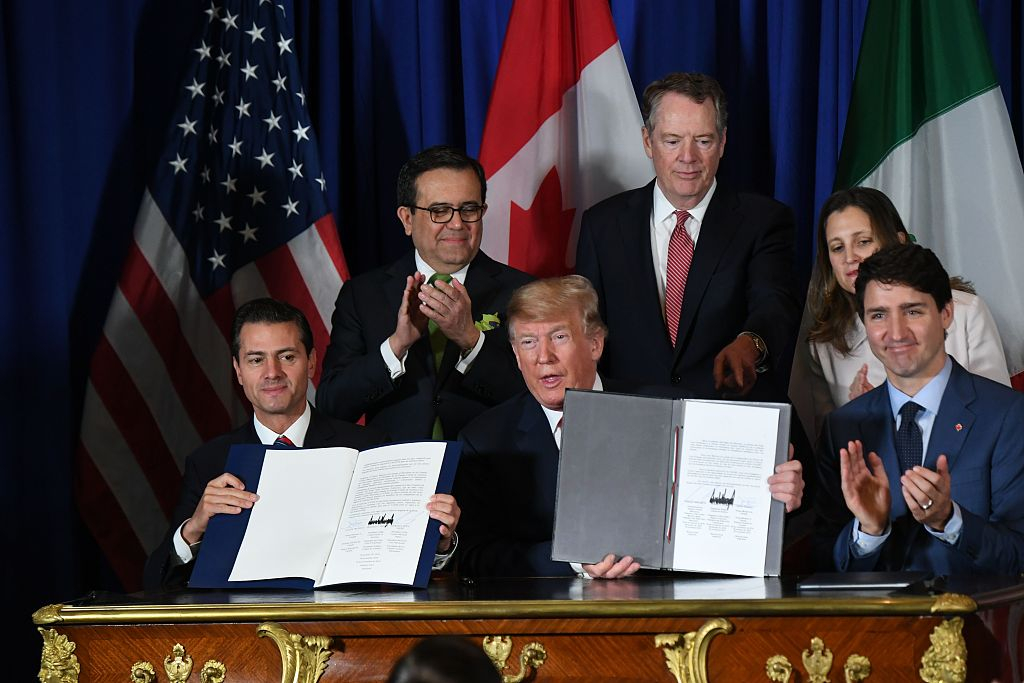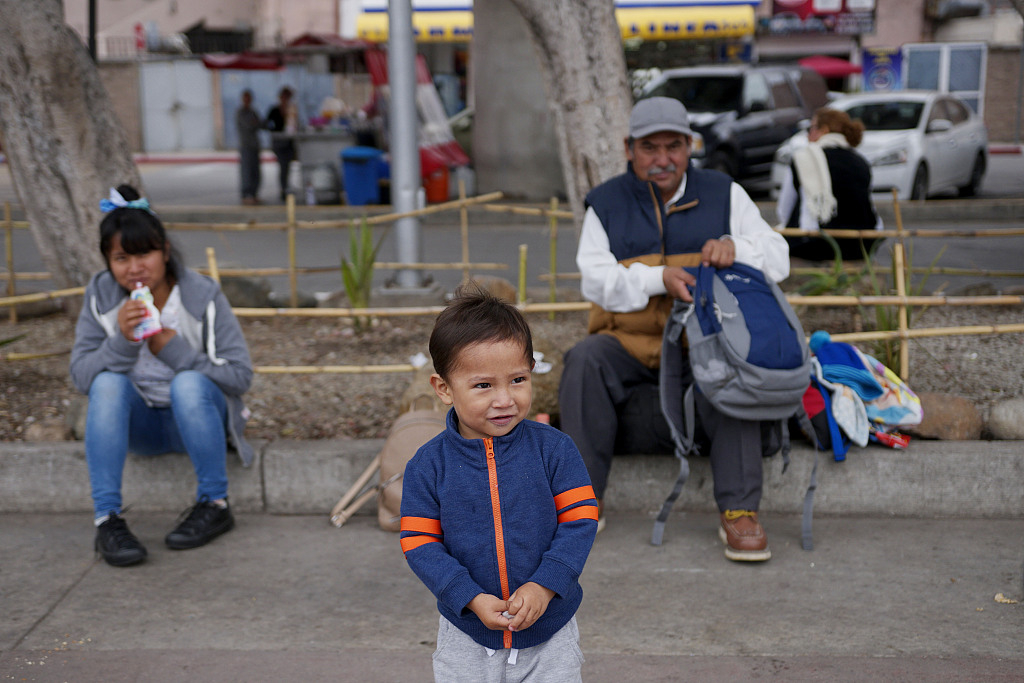
Opinion
20:17, 05-Jun-2019
Mexico is done being bullied
Updated
22:31, 05-Jun-2019
Pan Deng

Editor's note: Pan Deng is a member of the Academic Committee at the Charhar Institute and executive director of the Latin America and Caribbean Region Law Center of China University of Political Science and Law. The article reflects the author's opinion, and not necessarily the views of CGTN.
Trump is waving his tariff stick again, this time targeting his neighbor: Mexico.
On May 30, the White House announced that it would impose a 5-percent additional tariff on all goods imported from Mexico on the grounds that Mexico failed to effectively stop illegal migration. Unless "the illegal migration crisis is alleviated through effective actions," the punitive tariff will increase by 5 to 25 percent every month from July at the "sole discretion and judgment" of the White House.
If the strategy of adding tariffs was once used by the White House to "balance trade," the recent tariff hike on Mexico reveals its true purpose. Trump is using trade as nothing more than a bargaining chip to coerce other countries into sharing the cost of solving America's domestic problems.
In the beginning, Trump indeed got his way. And it seems now the "exception" has become the norm for Trump. Hence his logic that as long as he plays the "tariff" card, he can easily get everything he wants or even more at the negotiating table. This time he is going after its third largest trading partner, and America's most important source of raw materials and market for dumping goods.
Trump pulled the trigger when the United States-Mexico-Canada Agreement (USMCA) entered the final approval procedure before coming into effect. The USMCA, which was advertised as "a fairer deal for freer markets" and a template for future global bilateral and multilateral trade agreements, made the main pusher recognize the potential of asking for more.

Mexico's former President Enrique Pena Nieto (L), U.S. President Donald Trump (C) and Canadian Prime Minister Justin Trudeau, are pictured after signing a new free trade agreement in Buenos Aires, November 30, 2018. /VCG Photo
Mexico's former President Enrique Pena Nieto (L), U.S. President Donald Trump (C) and Canadian Prime Minister Justin Trudeau, are pictured after signing a new free trade agreement in Buenos Aires, November 30, 2018. /VCG Photo
The U.S. was so enthusiastic that it pushed Enrique Pena Nieto, the former President of Mexico, to sign the agreement on the last day of his term, in order to thrust it upon his successor as a fait accompli. Regrettably, the Canadian and Mexican congresses have not approved it so far, and the agreement risks miscarriage before it sees the light of the day.
After several rounds of consultations, the U.S. Trade Representative Office issued a statement on May 17 to cancel all additional tariffs on steel and aluminum imports from Mexico so that the cactus country's lawmakers could quickly remove the last obstacles for ratifying the agreement.
However, the U.S. quickly changed its mind and it took only two weeks before it went back on its words and dealt a heavier blow to Mexico.
But this time, Mexico is done being bullied.
Although Mexican President Andrés Manuel López Obrador said that he wanted to avoid conflict with the United States and instructed his foreign minister to travel to Washington, he did not hesitate to point out in a letter to his U.S. counterpart that "America First is a fallacy" and Mexico will not be subjugated to such doctrine. At the same time, he was ready to launch counter-offensives on a list of products from the United States.
However, this is a "war" that either Washington nor Mexico City want to fight with each other.
A sudden increase in tariffs will disrupt the hard-won progress of the USMCA; if Mexico takes countervailing measures on imports from North America, it will deal a heavy blow to the North American economy and may even drag down the economic integration that had been going on for more than 30 years.
What's more, in terms of preventing illegal immigrants, what the U.S. really needs is not an enemy but close cooperation with its southern neighbor. If Obrador is pushed to the corner and decides to open the border, even if only for a few days, U.S. southern states can get their hands full for months.

Immigrants wait to receive a ballot for asylum hearings to enter the United States, in Tijuana, Mexico, May 31, 2019. /VCG Photo
Immigrants wait to receive a ballot for asylum hearings to enter the United States, in Tijuana, Mexico, May 31, 2019. /VCG Photo
Still, it is hard to deny that the Mexican economy is heavily dependent on exports to the United States. The power gap between the two countries also determines that Mexico cannot afford to prolong the standoff. Perhaps it is precisely because Trump knows the weakness of his neighbor that his "Art of the Deal" has the opportunity to shine again: that is if "backtracking," "bluffing" and "bullying," could be counted as art at all.
But what this "artist" did not expect is that this Mexican government is different from past versions. Although the Mexican president is hoping to resolve the conflicts, he would not surrender without putting up a fight. It seems that Mexico now has seen through Trump's threats and broken promises and it is tired of being bullied.
(If you want to contribute and have specific expertise, please contact us at opinions@cgtn.com.)

SITEMAP
Copyright © 2018 CGTN. Beijing ICP prepared NO.16065310-3
Copyright © 2018 CGTN. Beijing ICP prepared NO.16065310-3